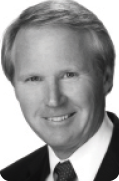
There was a time when there were no optometrists working at Empire Eye Physicians. Looking back now, that seems like another world, one we would never consider going back to. Optometry has become an integral and indispensable part of who we are as a practice. It was not always that way, but as our practice and eye care have evolved over the past 20 years, it is a fact today.
In the late 1980s, our practice decided to work more closely with optometry in the comanagement of cataract patients. Several local optometrists with whom we were exploring working recommended that we hire an optometrist to help manage the care of patients and to act as a liaison between the community optometrists and our practice. We involved them in the hiring process to make sure we found a good fit. Our cataract practice grew rapidly, and the optometrist we hired, Frank Galizia, OD, soon became an experienced medical optometrist who worked closely with our referring doctors. He quickly became the local expert on cataract surgery and helped educate the optometric community on the postoperative care of cataract patients.
Dr. Galizia’s role expanded to include organizing continuing education for local optometrists through our office and refining the comanagement process. He was also the practice ombudsman, handling issues that would inevitably arise. All of this allowed my partner and me to focus on what we loved to do most: surgery. In a short time, the practice doubled and then tripled its surgical volume. This never would have been possible without bringing an optometrist on board.
The role of optometrists in our practice became even more crucial with the rapid growth of LASIK in the 1990s. Dr. Galizia was deeply involved in the development of our refractive surgery practice and referral network. He learned with us which patients were good LASIK candidates and picked up all of the ins and outs of postoperative care and the management of complications. Again, he was the key educator of the local optometric community. We became one of the leading refractive surgery practices in the Pacific Northwest, largely due to the efforts of our optometrist.
Fast forward to the present, and we have continued to expand the roles of our optometrists, Casey Claypool, OD, and Alicia Heaton, OD. They work closely with our referring doctors to help strengthen our referral networks. They organize all of our continuing education programs throughout the year and help develop our marketing programs. They have become key opinion leaders and speak at meetings locally and nationally. Clinically, their roles have continued to grow, and now our optometrists conduct most routine care visits and the majority of postoperative care. Our practice has also built a robust ocular surface disease clinic run entirely by our optometrists. Our collagen cross-linking practice and specialty contact lens program also rely heavily on them. All of this allows the ophthalmologists the luxury of primarily seeing patients with significant pathology or those needing surgery.
Going forward, it seems that practices that have successfully integrated optometry will be better able to thrive in what is sure to continue to be a challenging environment. For our practice, employing optometrists has been rewarding both professionally and financially. Optometrists have become an integral part of who we are as a practice. In the future, there is no doubt that optometry will play an ever-increasing role in our continued growth.

